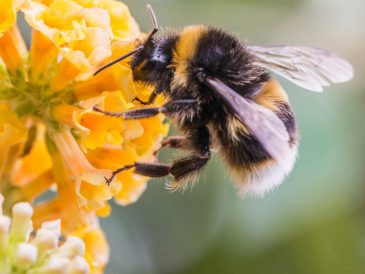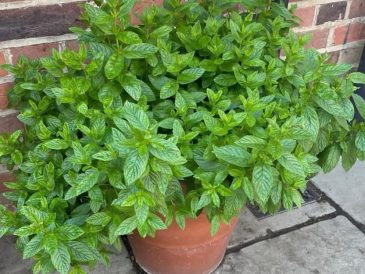A bay tree, known scientifically as Laurus nobilis, is more than just an elegant, aromatic addition to your garden. Bay trees offer numerous benefits, both aesthetically and practically. Not only do they provide a lush, green accent to your backyard, but they also supply an endless source of bay leaves, an indispensable ingredient in many culinary dishes. For gardeners and home cooks alike, bay trees are a gift that keeps on giving. In this article, we’ll explore why a bay tree should be a staple in every backyard and how you can use its leaves to enhance your cooking and well-being.
Understanding the Bay Tree: A Brief Overview
The bay tree, or bay laurel, is a hardy evergreen shrub native to the Mediterranean region. It can be grown as a tree or a shrub and is known for its glossy, dark green leaves, which emit a strong, pleasant aroma. Bay trees are slow-growing and can reach heights of up to 30 feet, although they can be pruned to remain much smaller. They are relatively low-maintenance, drought-tolerant, and can thrive in a variety of soil types, making them an excellent choice for home gardeners.
The Culinary Uses of Bay Leaves in Everyday Cooking
Bay leaves are a staple in kitchens around the world, prized for their ability to enhance the flavors of soups, stews, sauces, and braises. The leaves release their flavor slowly, making them perfect for long-cooking dishes. Whether you’re crafting a classic French bouquet garni or adding depth to an Italian ragu, a bay leaf is often the secret ingredient. To use, simply add whole leaves to your dish during cooking and remember to remove them before serving. The subtle, earthy flavor of bay leaves can transform your everyday meals into gourmet experiences.
Health Benefits Associated with Bay Leaves
Bay leaves are not only culinary treasures but also offer various health benefits. They are rich in vitamins A, C, and B6, as well as minerals such as iron and manganese. Bay leaves also have anti-inflammatory, antifungal, and antibacterial properties, making them a natural choice for boosting immunity and supporting overall health. They have been used in traditional medicine to alleviate digestive issues, reduce stress, and improve heart health. Incorporating bay leaves into your diet can be a simple yet effective way to enhance your wellness.
Growing and Caring for Your Bay Tree: A Step-by-Step Guide
Starting your bay tree journey begins with choosing the right spot in your garden. Bay trees prefer a sunny or partially shaded location with well-drained soil. Plant young bay trees in the spring and water them regularly during their first year to establish a strong root system. Once established, bay trees require minimal water and can tolerate dry conditions. Prune your tree annually to maintain its shape and size, and mulch around the base to retain moisture and prevent weeds. With proper care, your bay tree will thrive and provide fragrant leaves for years to come.
Harvesting Bay Leaves: When and How to Do It Properly
The best time to harvest bay leaves is in midsummer when the leaves are at their peak in terms of essential oils. Choose mature, dark green leaves, as they have the most flavor. Use sharp scissors or pruning shears to cut the leaves, ensuring you leave enough foliage for the tree to continue growing. Rinse the leaves under cool water and pat them dry before use or storage. Regular harvesting encourages healthy growth and provides you with a continuous supply of fresh leaves.
Storing and Preserving Bay Leaves for Long-Term Use
Fresh bay leaves can be used immediately or dried for later use. To dry, spread the leaves in a single layer on a baking sheet and place them in a warm, dry area away from direct sunlight. Turn the leaves occasionally until they are completely dry and brittle. Store dried bay leaves in an airtight container away from light and moisture. Properly stored bay leaves can retain their flavor for up to a year. Freezing fresh bay leaves is another option; place them in a sealed plastic bag and store in the freezer for up to six months.
Creative Non-Culinary Uses for Bay Leaves in Your Home
Beyond the kitchen, bay leaves can be used in various ways around the home. Bay leaves can serve as a natural air freshener, simply boil a few leaves in water to release their aroma. They can also be used in DIY cleaning products due to their antibacterial properties. Additionally, placing bay leaves in pantry and storage areas can repel pests such as moths and cockroaches. Some people also use bay leaves in handmade sachets and wreaths, combining aesthetic appeal with functionality. Their versatility makes bay leaves an invaluable asset in any household.
Common Pests and Diseases Affecting Bay Trees
While bay trees are generally robust, they can occasionally be affected by pests and diseases. Common pests include scale insects and aphids, which can be controlled with insecticidal soap or horticultural oil. Fungal diseases, such as leaf spot and powdery mildew, may arise in humid conditions but can be managed by ensuring good air circulation and avoiding overhead watering. Regularly inspecting your bay tree and maintaining good garden hygiene can prevent most problems. Should issues arise, timely intervention will keep your bay tree healthy and productive.
Conclusion: Why Every Gardener Should Consider Planting a Bay Tree
Incorporating a bay tree in your backyard not only adds beauty and structure to your garden but also provides a continuous supply of flavorful and health-boosting bay leaves. Their culinary versatility, coupled with their ease of care and numerous health benefits, makes bay trees an excellent choice for both novice and experienced gardeners. Additionally, the leaves’ practical uses around the home further enhance their value. By planting a bay tree, you invest in a multifunctional plant that enriches your cooking, supports your health, and contributes to a sustainable lifestyle.





